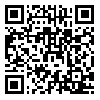BibTeX | RIS | EndNote | Medlars | ProCite | Reference Manager | RefWorks
Send citation to:
URL: http://jhr.ssu.ac.ir/article-1-810-en.html


 , Sakineh Rakhshanderou1
, Sakineh Rakhshanderou1 

 , Reza Negarandeh2
, Reza Negarandeh2 

 , Negin Niksadat *
, Negin Niksadat * 

 3, Ali Ramzankhan1
3, Ali Ramzankhan1 

 , Ali Vasheghani Farahani4
, Ali Vasheghani Farahani4 


2- Nursing and Midwifery Care Research Center, School of Nursing and Midwifery, Tehran University of Medical Sciences, Tehran, Iran
3- 1. Department of Health Education and Promotion, School of Health & safety, Shahid Beheshti University of Medical Sciences. Tehran, Iran 2. Department of Public Health, Faculty of health, Tehran Medical Sciences, Islamic Azad University, Tehran, Iran , Neginniksadat@yahoo.com
4- Cardiac primary prevention research center, Cardiovascular Disease Research Institute, Tehran University of Medical Sciences, Tehran, Iran
Background: Patients' education is a key factor in patients' care. The purpose of this study is to design a protocol for a convergent parallel mixed methods study to explore the experiences of patients about their received educations based on andragogy model.
Methods: This convergent parallel mixed method study includes two parallel quantitative and qualitative phases. During the quantitative phase, a cross-sectional survey will be conducted on 350 adult patients who had the history of hospitalization and received patient education from selected hospitals of Tehran, Iran. Sampling method will be random, and data collection tool will be a researcher-made questionnaire based on the principles of andragogy. The questionnaire’s validity and reliability are also measured, and data will be analyzed using SPSS 16. The qualitative phase will be conducted on adult patients who will be recruited purposively with maximum variation from the selected hospitals. Data will be gathered through semi-structured interviews and analyzed by directed content analysis. With regard to mixed method and using aligning convergence method, the results of the two sets of data will be compared or merged to see if the findings confirm or disconfirm each other. In this parallel section, the similarities between quantitative and qualitative results for assessing patient education are discussed and adapted to suit each other based on andragogy.
Conclusions: The findings of this study will provide information regarding defects in patient education, suggesting that the principles of andragogy will develop patient education programs.
Received: 2023/12/19 | Accepted: 2024/04/15 | Published: 2024/01/21
| Rights and permissions | |
 |
This work is licensed under a Creative Commons Attribution 4.0 International License. |




